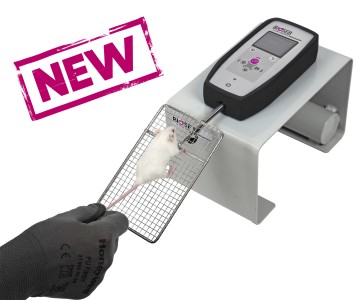Authors
S. Chintawar, R. Hourez, A. Ravella, D. Gall, D. Orduz et al.
Lab
Brussels Free University (ULB), Laboratory of Experimental Neurology and Laboratory of Neurophysiology, Brussels, Belgium ; University of Turin, Department of Clinical and Biological Sciences and Cavalieri Ottolenghi Scientific Institute, Orbassano, Italy
Journal
The Journal of Neuroscience
Abstract
The B05 transgenic SCA1 mice, expressing human ataxin-1 with an expanded polyglutamine tract in cerebellar Purkinje cells (PCs), recapitulate many pathological and behavioral characteristics of the neurodegenerative disease spinocerebellar ataxia type 1 (SCA1), including progressive ataxia and PC loss. We transplanted neural precursor cells (NPCs) derived from the subventricular zone of GFP-expressing adult mice into the cerebellar white matter of SCA1 mice when they showed absent (5 weeks), initial (13 weeks), and significant (24 weeks) PC loss. Only in mice with significant cell loss, grafted NPCs migrated into the cerebellar cortex. These animals showed improved motor skills compared with sham-treated controls. No grafted cell adopted the morphological and immunohistochemical characteristics of PCs, but the cerebellar cortex in NPC-grafted SCA1 mice had a significantly thicker molecular layer and more surviving PCs. Perforated patch-clamp recordings revealed a normalization of the PC basal membrane potential, which was abnormally depolarized in sham-treated animals. No significant increase in levels of several neurotrophic factors was observed, suggesting, along with morphological observation, that the neuroprotective effect of grafted NPCs was mediated by direct contact with the host PCs. We postulate that a similar neuroprotective effect of NPCs may be applicable to other cerebellar degenerative diseases.
BIOSEB Instruments Used
Grip strength test (BIO-GS3)
Source :

 Douleur - Allodynie/Hyperalgésie Thermique
Douleur - Allodynie/Hyperalgésie Thermique Douleur - Spontanée - Déficit de Posture
Douleur - Spontanée - Déficit de Posture Douleur - Allodynie/Hyperalgésie Mécanique
Douleur - Allodynie/Hyperalgésie Mécanique Apprentissage/Mémoire - Attention - Addiction
Apprentissage/Mémoire - Attention - Addiction Physiologie & Recherche Respiratoire
Physiologie & Recherche Respiratoire




































 Douleur
Douleur Système Nerveux Central (SNC)
Système Nerveux Central (SNC)  Neurodégénérescence
Neurodégénérescence Système sensoriel
Système sensoriel Système moteur
Système moteur Troubles de l'humeur
Troubles de l'humeur Autres pathologies
Autres pathologies Système musculaire
Système musculaire Articulations
Articulations Métabolisme
Métabolisme Thématiques transversales
Thématiques transversales Congrès & Meetings
Congrès & Meetings 